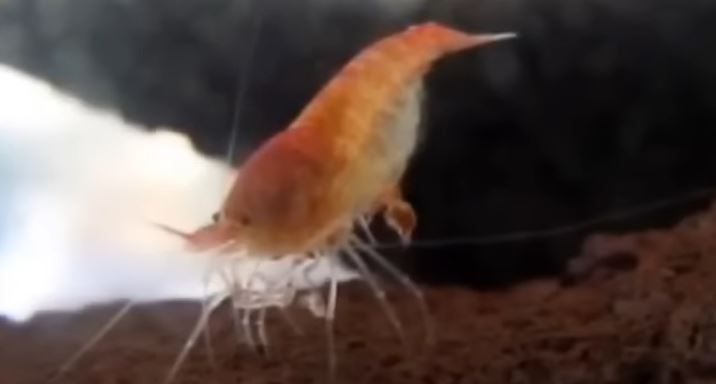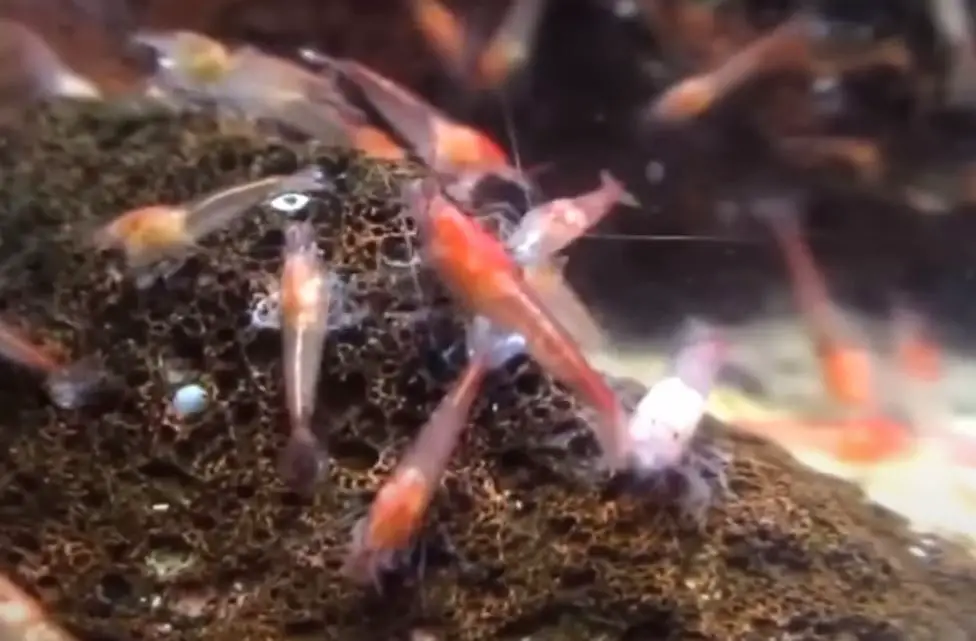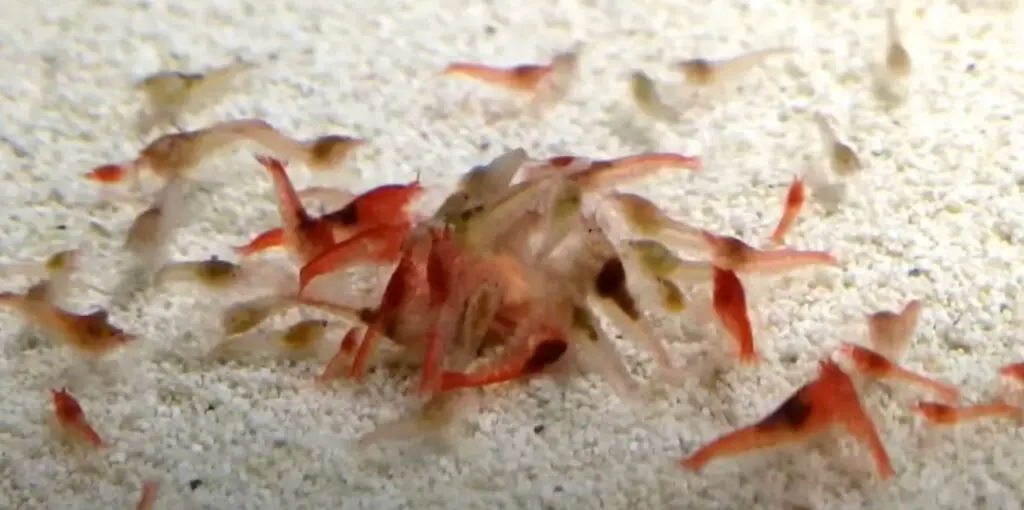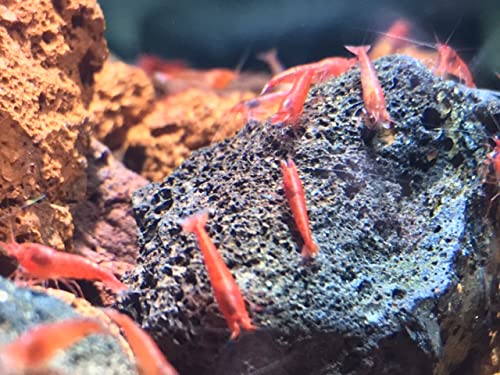The Opae Ula Shrimp, a captivating creature that can survive in salt and freshwater environments, is a fantastic inhabitant of the oceans. Due to its seemingly never-ending lifespan, its ability to endure such drastically different habitats has led some to dub it ‘the immortal shrimp.’ Despite this rather magical attribute, the Opae Ula Shrimp remains somewhat mysterious; although studied since the late 19th century, many aspects of its life remain unknown.
In this article, we will explore all there is to know about these fascinating crustaceans – from their origin story to how they are kept as pets. We will also examine why experts believe studying them may help us better understand our environment and ecosystems.
As well as delving into the science behind these small but mighty creatures, we shall learn why so many people have become enamored with them – often taking great pleasure in setting up mini-ecosystems for their shrimps within home aquariums across the world.
- Overview of The Opae Ula Shrimp
- Habitat Requirements for The Opae Ula Shrimp
- Care Tips for Keeping Opae Ula Shrimp
- Feeding Habits Of The Opae Ula Shrimp
- Breeding Habits Of The Opae Ula Shrimp
- Lifespan and Size of The Opae Ula Shrimp
- Health Issues for The Opae Ula Shrimp
- Benefits of Owning an Opae Ula Shrimp
- Types of Tanks Suitable for Opae Ula Shrimp
- Water Parameters For The Opae Ula Shrimp
- Temperature Requirements for The Opae Ula Shrimp
- What to Look for When Buying an Opae Ula Shrimp
- Tank Mates Compatible with The Opae Ula Shrimp
- Interesting Facts About the Opae Ula Shrimp
- Troubleshooting Common Problems with The Opae Ula Shrimp
- Conclusion
Overview of The Opae Ula Shrimp
The Hawaiian opae ula shrimp is a unique, captivating, and beneficial species. First discovered in Hawaii, this tiny creature has been popularized for its ability to turn a small tank into a miniature ecosystem. No wonder these hardy little critters have become increasingly sought after as pets in homes worldwide!
This unique and fascinating Ula shrimp species will surely delight any aquarist. As they grow, their bright red coloration stands out against sea-green rocks. These beautiful little creatures are also known for scavenging for food at night – when their vibrant colors dim considerably. They even help keep aquariums clean by consuming algae from walls and other surfaces!
These extraordinarily resilient crustaceans can survive without oxygen or water changes if necessary – truly remarkable, given their size! This adaptability makes them ideal candidates for tanks with limited space or maintenance requirements. They can live up to 10 years in captivity with proper care, making them excellent companions.

Habitat Requirements for The Opae Ula Shrimp
The Opae Ula Hawaiian Red Shrimp, commonly known as the ‘Opae Ula,’ is a fascinating species of crustaceans. To ensure that this species thrives in its environment, it’s essential to understand its habitat requirements. Here are some key points when looking after your Opae Ula shrimp:
- Ensure they have access to clean and filtered water. Regular water changes will help your shrimp maintain a healthy balance of nutrients.
- The ideal temperature range is between 68-77°F (20-25°C).
- As these shrimp are natural scavengers, please provide them with plenty of algae and biofilm to feed on.
Having the right conditions means the difference between having thriving or struggling shrimp. Therefore, ensuring you get all the correct details matters significantly – from providing adequate food sources to maintaining consistent temperatures and filtering capabilities in the water tank. At times, this can be challenging but well worth it! Taking good care of these little creatures goes beyond just keeping them alive; it also helps foster an appreciation for nature’s beauty and biodiversity!
Now that we know what kind of environment our Opae Ula needs let’s explore how best to care for them.
Care Tips for Keeping Opae Ula Shrimp
Wouldn’t it be cool if you could keep your very own opae ula shrimp in an aquarium? Well, the great news is that you can! Caring for these fascinating little creatures doesn’t have to be complicated. With just a few tips, you can ensure they thrive in their tank and enjoy a long, healthy life.
First off: water requirements. Opae ula shrimp should always have clean and filtered water in their tanks. If not properly maintained, the tank’s environment can quickly become toxic to them – so regular water changes are essential. It’s also important to understand what kind of tank mates you should put with your opae ula shrimp; they’re generally relatively peaceful but may get scared quickly by fish or other aggressive animals that share their home.
Next: feeding habits. Once every week, feed your shrimp pellets designed explicitly for them/their species – this will give them all the nutrition they need to stay healthy and strong. You’ll want to avoid giving them too much food; overfeeding can lead to serious health issues like shell rot or fin rot down the line. Also, try not to add any new foods suddenly, as eating something poisonous could cause indigestion or even death!
Finally, proper maintenance is key when caring for opae ula shrimp – remember that regular water changes and monitoring pH levels are critical for keeping them safe and healthy in their tank habitat. If done right, you’ll have happy and thriving shrimps on your hands, making taking care of them all worth it! Considering these easy-to-follow tips will ensure your pet shrimps live happily ever after.
Feeding Habits Of The Opae Ula Shrimp
The opae ula shrimp, also known as volcano shrimp, are tiny red creatures native to the Hawaiian Islands. They have become popular pets recently due to their fascinating behavior and rich colors. To keep these unique critters happy and healthy, it’s essential to understand their feeding habits.
One of the most exciting things about these creatures is that they don’t require fish food; instead, they feed on algae growth found naturally in their environment. If you care for them properly, you shouldn’t need to give them any additional food sources. Allowing natural algae blooms will provide more than enough nutrition for your little shrimps!
However, sometimes small amounts of fish food can be beneficial in stimulating algae production and ensuring that your tank has plenty of nutrients available. If you feel comfortable, introducing high-quality fish food into your aquarium should not disturb the balance or harm your opae ula shrimp.
TIP: It’s best to consult experts before adding anything new to your tank – especially regarding such delicate species as the opae ula shrimp!
Breeding Habits Of The Opae Ula Shrimp
Like a tiny aquatic symphony, the opae ula shrimp can bring life to any tank. From their small size and unique appearance, these little creatures are fascinating by nature. But what exactly do they need to thrive? Let’s look at the breeding habits of the opae ula shrimp!
The breeding season for opae ula shrimp occurs from late winter to early spring, typically from January to March. During this time, adult shrimp mate, and females carry fertilized eggs in their pleopods (swimming legs) until they hatch into larvae.
The larvae are released into the water column and spend several weeks developing before they settle on the substrate and metamorphose into juvenile shrimp. These juveniles then grow and mature over the course of several months until they are ready to mate and start the breeding cycle anew.
Opae ula shrimp are known for their longevity, with some individuals living up to 20 years in the wild. However, their reproductive output is relatively low compared to other shrimp species, with females producing only a few dozen eggs per breeding season.
Overall, the breeding cycle of opae ula shrimp is closely tied to their natural habitat’s seasonal and environmental cues. Their reproductive success depends on a delicate water temperature, salinity, and nutrient availability balance.

Lifespan and Size of The Opae Ula Shrimp
It’s easy to be intimidated by the idea of looking after opae ula shrimp, mainly because they’re so small. But don’t let their size fool you; these little creatures are surprisingly resilient and can live long if cared for properly. Let’s look at how long and what size an opae ula shrimp can grow to in captivity.
The links between the form of an opae ula shrimp and its lifespan are pretty remarkable. Generally speaking, adult specimens reach up to only 2 cm (0.8 inches) in length – meaning that the opae ula shrimp is one of the smallest aquarium species! On average, they live 3-5 years, with some reports stretching up to 10 years or more when provided with optimal conditions such as plenty of oxygenated water, cleanliness, and warm temperatures varying from 68°F–82°F (20°C–28°C). The vibrant red coloring associated with this type of shrimp will also become more vivid due to better living conditions and nutrition intake.
Given all these factors, it’s not difficult to understand why many aquarists keep opae ula shrimp as pets — despite their diminutive stature, they offer great companionship and have surprising longevity! Plus, since these invertebrates thrive in low-maintenance environments, they are ideal inhabitants for smaller tank ecosystems. With proper care, an individual may enjoy their pet for many years – providing endless entertainment!
Health Issues for The Opae Ula Shrimp
The opae ula shrimp, also known as the Hawaiian red or lava shrimp, is fascinating. Its relatively small size of only up to 0.75 inches long makes it perfect for nano tanks and terrariums. But did you know that potential health issues come with owning an opae ula shrimp? Let’s explore them in more detail.
When it comes to providing nutrition, enhancing shrimp pellets designed explicitly for neocaridina or caridina shrimp can help improve the overall health of your pet opae ula shrimps. However, one of the biggest problems encountered by owners of these low-form breeders is their vulnerability to bad water quality parameters such as high nitrates and phosphates, which will cause death if left unchecked for too long.
In addition, improper diet due to a lack of food variety can lead to nutritional deficiencies and affect their growth rate negatively. Furthermore, even when fed properly, they may still be susceptible to diseases caused by parasites like camallanus worms or aquatic fungi like Saprolegnia parasitica, which can quickly spread across entire tank populations if not treated promptly with medication.
Regular water changes should be done weekly to ensure optimal health and well-being while carefully monitoring parameters such as pH, temperature, oxygen levels, etc., and avoiding overcrowding in the tank/terrarium housing these creatures. With proper care and maintenance, these tiny critters can become attractive members in any aquarium setup!
Benefits of Owning an Opae Ula Shrimp
It’s a no-brainer that owning an opae ula shrimp can be beneficial. As the saying goes, ‘Small things make big differences,’ which is true regarding these fascinating creatures living in brackish water. They may not require much maintenance, but they need special care if you want them to thrive.
The first benefit of owning an opae ula shrimp is their size – they are pretty small compared to other pets like cats or dogs. This means you won’t have to worry about making too much space for them, as they’ll fit into any tank easily! Plus, they’re hassle-free, with minimal upkeep, such as enhancing shrimp pellets once every few weeks.
Another great thing about having one of these little guys around is that they can live in almost any environment. Whether your tank has freshwater or brackish water, the opae ula shrimp will adapt quickly and adjust accordingly. This makes it easier for owners who want to keep more than one species of fish together since each requires different types of tanks; there’s no need to buy multiple aquariums anymore!
Overall, owning an opae ula shrimp can bring many benefits without needing extensive work from its owner. With just a bit of attention here and there, your pet will indeed thank you for your effort by providing it with the best possible home environment.

Types of Tanks Suitable for Opae Ula Shrimp
Did you know that the opae ula shrimp is one of the oldest living species on Earth, having been around for over 3 billion years? This makes it a fascinating creature to observe and care for! Several options are available when choosing a tank suitable for an opae ula shrimp. Here are three types of tanks ideal for these vibrant red marine animals:
- Anchialine pools: Opae ula shrimp can survive in brackish and saltwater environments. An anchialine pool provides them with the ideal environment since they contain a mix of both fresh and salt water.
- Low-form breeders: Ula shrimp are low-form, meaning they don’t need as much space as other breeds. Smaller tanks may be sufficient, depending on how many shrimp you plan to keep.
- Smaller Tanks: Since opae ula shrimp are pretty small (about 0.5 cm long), they require less room than larger fish or aquatic creatures. They also prefer tight spaces like those found in smaller tanks which help create the feeling of security they crave.
Finding the right tank type for your opae ula shrimp doesn’t have to be complicated! Remember that any environment should provide ample space without taking away from their natural behavioral patterns while providing adequate filtration and oxygenation to ensure their health and well-being. With this information, you’ll soon be ready to enjoy these unique little critters!
Water Parameters For The Opae Ula Shrimp
The opae ula shrimp is so fascinating that it is almost unbelievable! These tiny creatures are one of the best pet invertebrates around, and if you’re looking to get these little guys as your new aquatic friends, you’ll want to know all about their water parameters. Ula shrimp is low-form animals, meaning they don’t require anything too complicated or difficult to set up a tank. However, some essential things must be considered to ensure your shrimp have an ideal home.
When creating a space for these small but mighty critters, remember that size matters – even more than usual with other aquariums! Opae ula shrimp are very small and can easily be overwhelmed by larger tanks; optimal sizes range from 10-20 gallons depending on how many shrimp you plan on keeping. It’s also essential that your tank contains plenty of hiding spots like rocks and plants for the shrimp to feel safe and secure.
Water temperature is vital in maintaining healthy water conditions for opae ula shrimp. They prefer temperatures between 72-75°F (22-24°C). Anything cooler could send them into shock, while hotter temperatures may cause problems such as bacterial growth or fungus outbreaks. With this in mind, keep your heater set at a consistent temperature to provide an optimum environment for these amazing creatures!
Temperature Requirements for The Opae Ula Shrimp
The fascinating opae ula shrimp is an exciting and unique aquarium species that can bring joy to any home. These vibrant red shrimp are very small, making them a perfect choice for those who don’t have much space in their tanks. They provide beautiful colors and personalities, and the shrimp are low-form breeders, making this type of invertebrate ideal for beginner aquarists.
When keeping the opae ula shrimp, it’s essential to understand the temperature requirements. Ula shrimp prefer temperatures between 75-80 degrees Fahrenheit with no more than 10-degree changes throughout each day; any lower or higher could cause stress on your pet. To ensure proper water parameters, keep a close eye on pH levels and ammonia, as well as other pollutants such as nitrates, to maintain the health of your tank inhabitants.
Research is essential when buying an opae ula shrimp because different types with varying needs may require additional care. Consider looking into online forums dedicated to these creatures, where members discuss diet, housing size, and common illnesses, all of which will help you create a safe environment for your new addition!
What to Look for When Buying an Opae Ula Shrimp
There are a few things to consider when looking for an opae ula shrimp. First and foremost, these critters are pretty small, so be sure to buy accordingly! Additionally, the vibrant colors of the shrimp make them an eye-catching addition to any tank. Finally, they’re low maintenance, perfect for beginners and experienced hobbyists.
The pictures in this paragraph will take you to an amazon page of an Opae Ula Shrimp seller.
Finding reputable suppliers with healthy specimens is essential when researching where to purchase this shrimp. Take your time reading reviews to get insight into other people’s purchase experiences. It’s also wise to ask questions if you’re unsure about anything and look at photos of what the shrimp should look like before buying one.
The key is finding a supplier who offers high-quality opae ula shrimps that will thrive in your home aquarium setup. With due diligence and some research, you’ll have no problem finding the right pet for your aquatic oasis. And by doing so, you’ll enjoy all the benefits these fascinating creatures offer!
The pictures in this paragraph will take you to an amazon page of an Opae Ula Shrimp seller.
Tank Mates Compatible with The Opae Ula Shrimp
The opae ula shrimp makes an excellent pet and is quickly becoming one of the most popular low-maintenance invertebrates. Astonishingly, these tiny creatures can survive up to three years in captivity! This means they are an excellent option for those who want to own a pet but don’t have time to commit to a more labor-intensive animal.
These little guys need minimal supplies and care, making them ideal pets for busy people or anyone looking to save on pet expenses. They do best when kept with other peaceful species such as snails, ghost shrimp, danios, gobies, and corydoras catfish – all compatible tank mates for the opae ula shrimp.
To ensure your new pet thrives in its new environment, carefully research any potential additions before adding them to the same tank. With the proper planning, you’ll be able to create an ecosystem where everyone gets along just fine, and your opae ula shrimp will stay happy and healthy!
Interesting Facts About the Opae Ula Shrimp
The opae ula shrimp is one of the best pet invertebrates out there. Not only are they low maintenance and easy to care for, but they also make an interesting addition to any home aquarium. This shrimp species has become increasingly popular as a pet because it’s remarkably hardy, making it one of the easiest pets you can get!
What makes them so fascinating? First, these little creatures are incredibly resilient and can live up to five years in captivity with proper care. The lifespan may even be longer depending on their environment and diet; however, they require clean water and regular feeding if you want your shrimp to thrive. They don’t need much else besides that – no special lighting or heating requirements – making them great for beginners without experience caring for aquatic animals.
Plus, since these shrimps are so small (usually less than 1 inch), they won’t take up much space in your tank, either! That means you can keep several without overcrowding; remember not to put too many together, or aggression might occur between individuals, leading to stress or death.
If done correctly, keeping opae ula shrimp could be a rewarding hobby that will bring you joy for years. To ensure success with this freshwater crustacean species, provide adequate food sources and monitor water conditions regularly. With all this knowledge, let’s begin troubleshooting common problems with the opae ula shrimp.
Troubleshooting Common Problems with The Opae Ula Shrimp
The opae ula shrimp is like a little sparkling gem nestled in the depths of an aquarium. Its presence can bring pleasure and comfort to any home, providing a calming atmosphere that’s hard to replicate. But as with all living creatures, they sometimes need special care to stay healthy and happy. Troubleshooting common issues with the opae ula shrimp isn’t difficult; it just requires some knowledge and patience.
One of the easiest steps is checking for water quality when you’re trying to determine why your precious pet isn’t thriving. The ideal temperature range for opae ula shrimp is between 72-78°F; if it dips below this level, their survival rate decreases significantly. If your tank’s water has dropped too low, try adjusting the heater or adding an air pump to increase circulation. It would be best to keep ammonia and nitrates at their lowest since these compounds are toxic even in small doses.
Finally, keeping the diet of your opae ula shrimp balanced is another important factor in maintaining their health. Foods high in protein, such as brine shrimp or daphnia, are best for them – but don’t overfeed! Too much food will lead to water pollution, which could cause more problems. If you stick to what works best for them, your furry friends should remain fit and active throughout their lives!
Conclusion
The Opae Ula shrimp may be small, but they are a fascinating and resilient species. Symbolically, they represent the power of nature and its ability to survive in even the most challenging environments. Their bright red color symbolizes courage and determination; it is said that these shrimp never give up, no matter how complex their journey might be. Finally, their playful behavior reminds us of our importance as stewards of this planet – if we can take care of such tiny creatures with respect and compassion, then surely we can do so for all other living things on Earth.
These incredible animals have taught us many lessons about resilience, strength, courage, and responsibility. We should continue to learn from them as we strive to create a better world for ourselves and future generations. With proper care, these little shrimps will offer us years of joyous companionship and occasional reminders of what it means to appreciate life’s smallest gifts truly.



